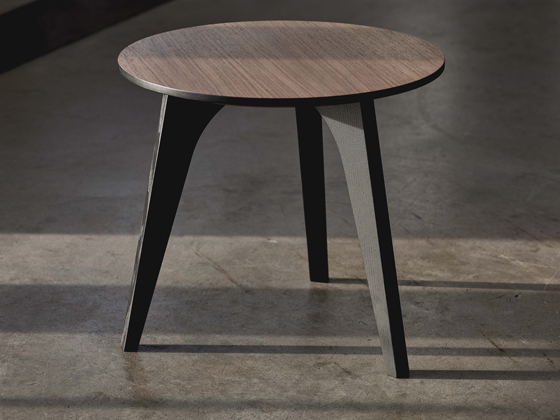Curves Ahead: Erik Bagger
Brand story by Dominic Lutyens
Hellerup, Danemark
09.06.16
Danish brand Erik Bagger is nothing if not consistent. The organic language of its glass and tableware finds new expression in its furniture designs.
Erik Bagger Furniture’s City chair, which is designed to optimise comfort, and comes with a chrome or wooden base. Shown here, the City table featuring the same style of single leg
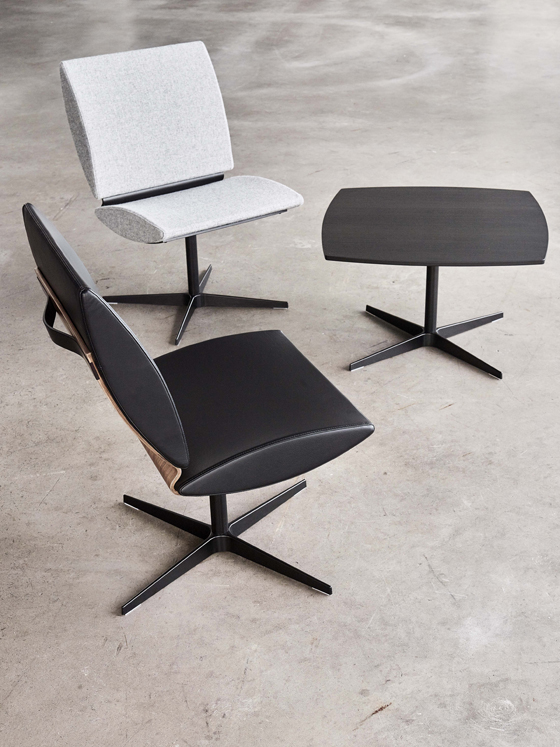
Erik Bagger Furniture’s City chair, which is designed to optimise comfort, and comes with a chrome or wooden base. Shown here, the City table featuring the same style of single leg
×Danish-born Erik Bagger might have trained as a goldsmith, but in 2014 he successfully switched to furniture design on co-founding the company Erik Bagger Furniture with his Brazilian wife, Caroline. That this turned out to be a seamless career move shouldn’t come as a surprise. After all, Erik was able to apply his considerable skill at working on a miniature scale to designing the beautifully detailed, finely crafted pieces — from lounge chairs to dining tables — which he now creates with his other half.
What’s more, the new venture was partly inspired by Erik’s long-standing passion for sketching furniture. As for Caroline, she has a deep-rooted interest in design, thanks in no small part to her own creative background: her mother is a designer and Caroline studied architecture and design in Brazil, finally gaining a degree in design.
Another view of the elegant City lounge chair whose backrests are cradled by curved panels of wood (top); the simple Jazz table rests on three tapering legs (middle); illustrating the company's predeliction for gentle curves: the Copenhagen chair (above)
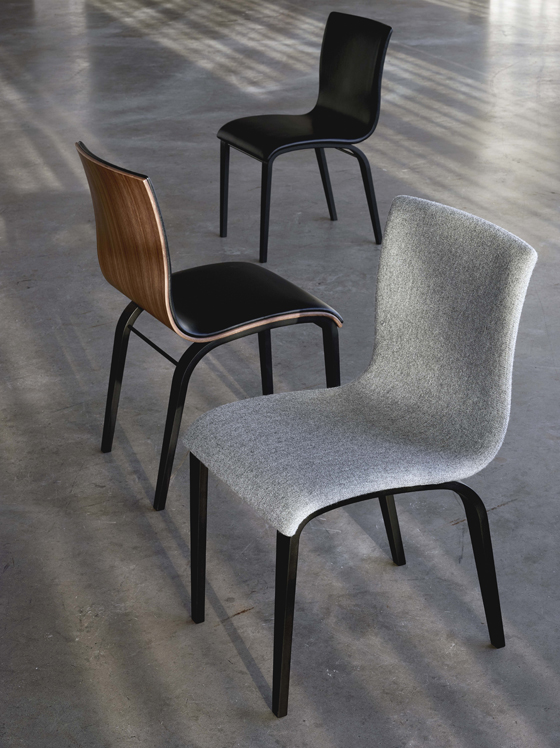
Another view of the elegant City lounge chair whose backrests are cradled by curved panels of wood (top); the simple Jazz table rests on three tapering legs (middle); illustrating the company's predeliction for gentle curves: the Copenhagen chair (above)
×Erik, too, built up his design expertise from an early age. In 1972, renowned Danish metalware brand Georg Jensen took him on as a goldsmith. During his 15-year stint there, he had the good fortune to work with legendary designer Henning Koppel, who made his mark in the 1950s with his clean-lined yet organic pitchers and dishes. This instilled in Erik a deep-seated love of Danish mid-century furniture, whose streamlined, organic aesthetic and democratic belief in affordability inform his and Caroline’s minimalist and gracefully organic work.
The Danish mid-century design tradition also appeals to Erik because, as he rightly observes, many of the period’s designers were unusually cultured for being artists, too. ‘Koppel studied sculpture in Paris. He was a highly educated artist,’ says Erik who lives in North Zealand, north of Copenhagen. In the same breath, he cites another Danish design giant, Arne Jacobsen: ‘Jacobsen was a furniture designer, architect and artist. He often travelled to Italy to paint watercolours but not many people know that. His famous Swan chair is not just a chair, it’s a beautiful sculpture.’
Erik and Caroline Bagger, who co-founded Erik Bagger Furniture in 2014. The two bring their own individual yet complementary skills to the design process

Erik and Caroline Bagger, who co-founded Erik Bagger Furniture in 2014. The two bring their own individual yet complementary skills to the design process
×In 1987, Erik left Georg Jensen to form his own company Form Function in Gentofte, on the east coast of Zealand, renaming it Erik Bagger Design in 1988. At the time, he designed glassware and tableware. Five years later, he met Erik Rosendahl and sold him the rights to his designs. Erik’s 1990s designs include his curvaceous Grand Cru glassware line for Rosendahl – surely one of his most iconic designs – and minimalist, gas-powered hurricane lamps, created to mark the 40th anniversary of the Louisiana Museum of Modern Art, near Copenhagen.
He has also created versatile glassware for the restaurant of The Copenhagen Opera House; these are used, too, at MoMA in New York. The subtle curves of Erik’s glassware can also be seen in the furniture he and Caroline create. She and Erik first met in 2013. Caroline had applied for a job at his studio and two factors made her particularly eligible for it – her interest in Scandinavian design, shared with Erik, and her experience at designing digitally. ‘Before this, I’d never been lucky enough to find a designer whom I got on with temperamentally and who had similar ideas about design. But Caroline had the same vision as me.’
A Curves chair and armchair flank the Bowtie table (top); three versions of the soft-contoured Curves chair (middle); the versatile Curves collection also includes this two-seater sofa with a more dramatically curvaceous silhouette (above)
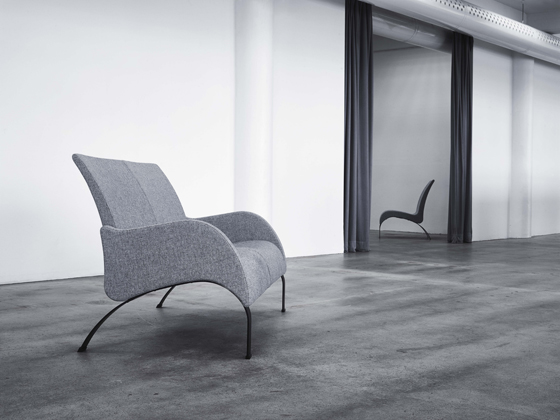
A Curves chair and armchair flank the Bowtie table (top); three versions of the soft-contoured Curves chair (middle); the versatile Curves collection also includes this two-seater sofa with a more dramatically curvaceous silhouette (above)
×This happy meeting of minds was another catalyst for the furniture business: it inspired Erik to dig out his furniture drawings and make a go of manufacturing them. So far, fired by a desire to produce classic pieces that are both ergonomic and stand the test of time such that their owners treasure them for decades, he and Caroline have co-designed their soft-contoured Copenhagen chair and bar stool, Jazz family of tables with elegantly tapering legs, circular Bowtie table named after its decorative but simple bowtie-shaped base, and super-comfortable City lounge chair.
Another design, Curves, is pared-down, yet has a sensually sinuous silhouette. This comes in many versions: sofa, armchair, dining chair, barstool and ottoman. Erik and Caroline favour natural materials and neutral, sober colours, such as charcoal grey and black, which render their designs more timeless still. Their pieces are all available from their welcoming showroom in Hellerup, north of Copenhagen.
A black Copenhagen and two Curves barstools with upholstery in light grey fabric and cognac leather, stand tall on slender legs
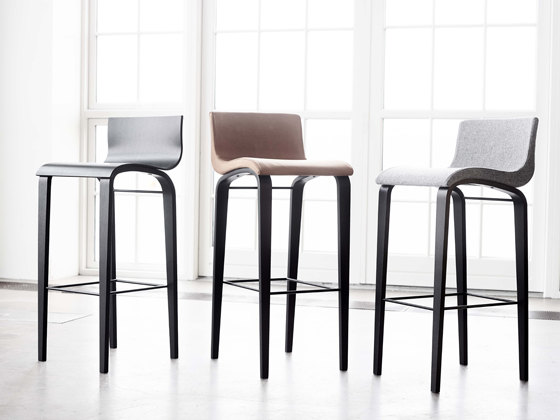
A black Copenhagen and two Curves barstools with upholstery in light grey fabric and cognac leather, stand tall on slender legs
×This duo’s teamwork is truly symbiotic, with each designer bringing essential, highly specific skills to the design process. ‘Our teamwork is fantastic,’ enthuses Erik. ‘When Caroline shows me her designs, I modify them as I have a greater technical knowledge.’ Yet Caroline has her own indispensable strengths. She is extremely knowledgeable about ergonomics and is passionate about making her and Erik’s designs as comfortable as possible. Erik admits that at first he thought Caroline wasted too much time deliberating on just the right angles for a piece of furniture, but soon realised that her attention to detail was vital to a design’s success. ‘I have lots of patience for working out ergonomic issues, which Erik doesn’t have,’ she says.
As for the future, one of the most exciting aspects of this young company – which plans to introduce a home accessories line soon that will include lighting – is its potential for expansion.
© Architonic




